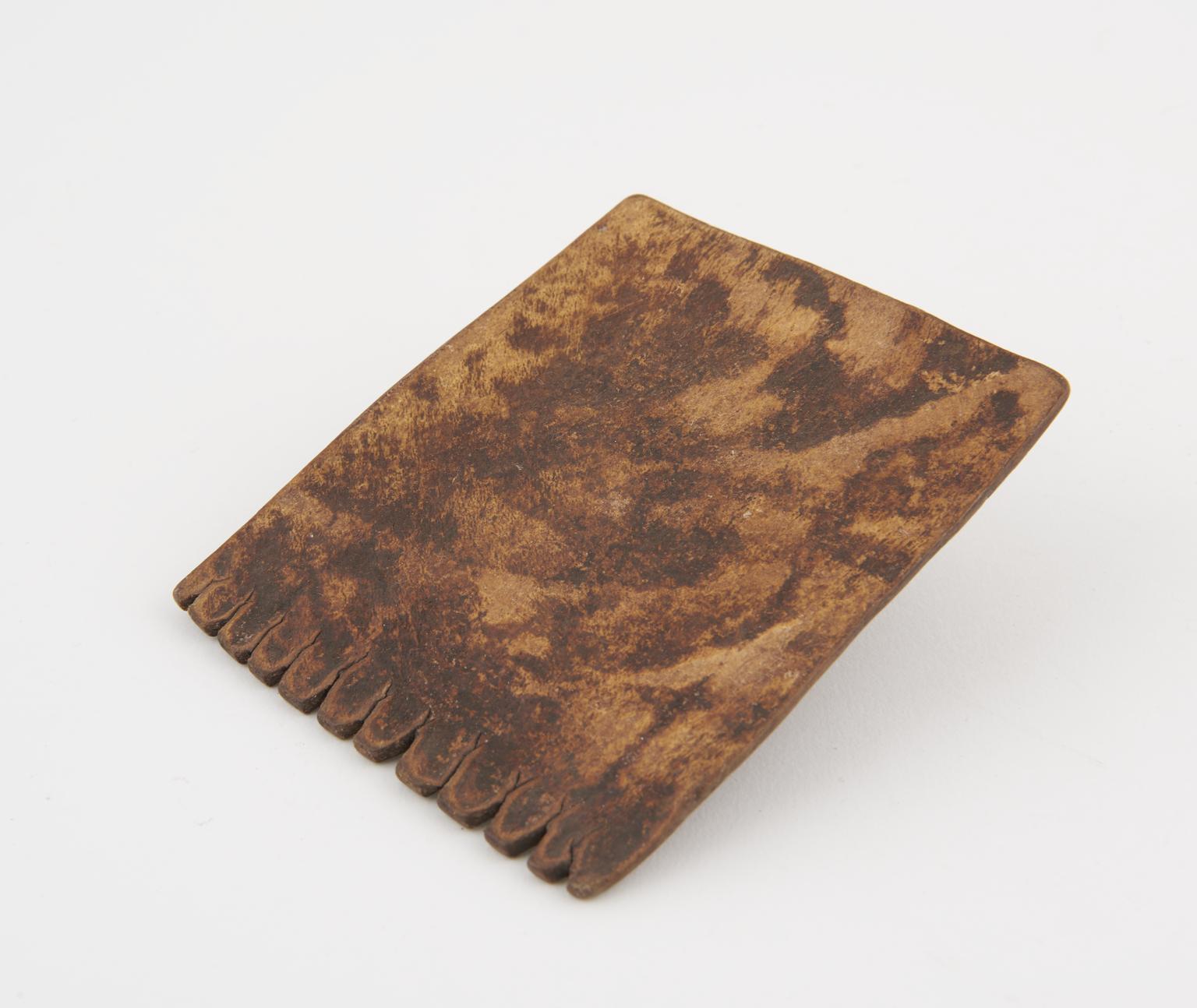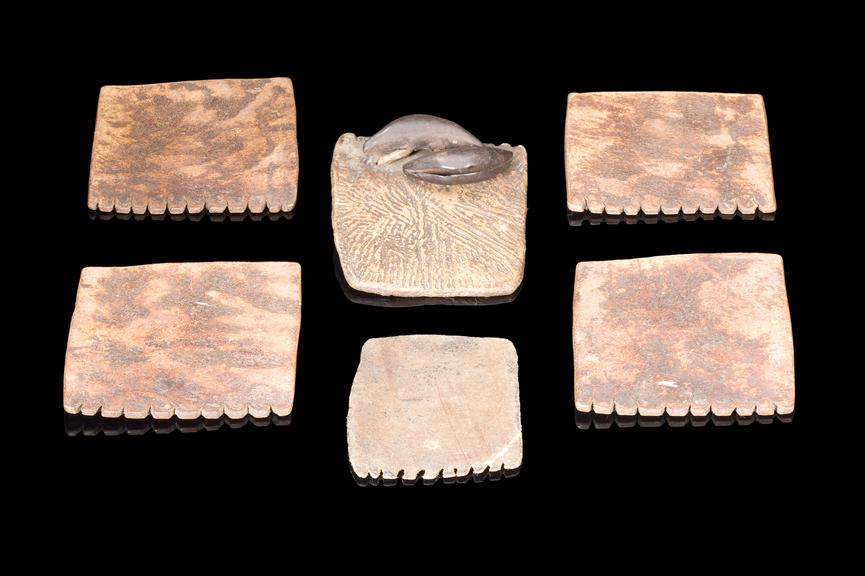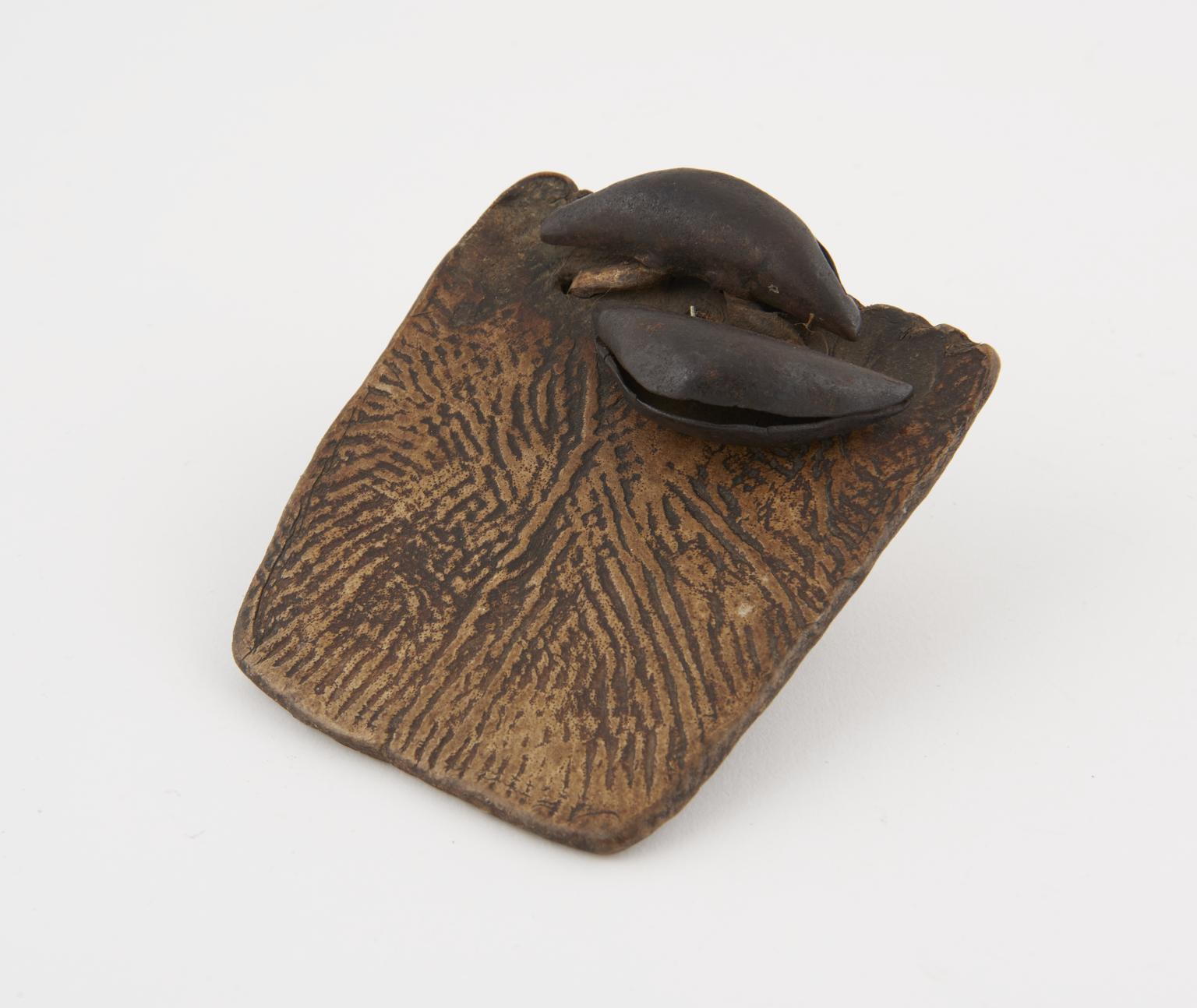
Divination plaque
Divination plaque, hide, Uganda, South Africa and Zambia, 1880-1920
- Measurements:
-
overall: 5 mm x 87 mm x 100 mm, 0.026 kg
- Materials:
- whole, hide
- Object Number:
- A38291/1
- type:
- divination plaques


6 divination plaques, hide, one with 2 bells, by Baganda tribe, Uganda, c. 1920
A set of six divination plaques from Uganda. In many African countries the cause of disease can be diagnosed by divination. The diviner throws the plaques onto a mat and interprets their pattern. These plaques are made from animal hide, and one has two bells fixed to the top.

Divination plaque, hide, Uganda, South Africa and Zambia, 1880-1920

Divination plaque, hide, one with 2 bells, Uganda, South Africa and Zambia, 1880-1920
The Bagandan people of Uganda in East Africa used this plaque. It was part of a set of artefacts they used in divination. It is made of hide and has two bells attached. Divination is used in many African communities to diagnose the cause of illness. The plaque was donated by the Ugandan Government in 1925.